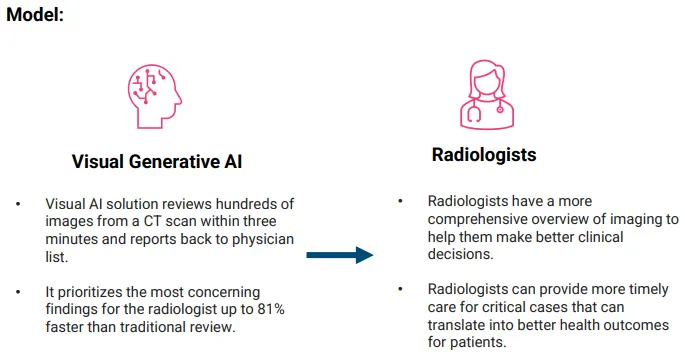As Leading Health Systems continue to navigate their AI implementation strategy, many are grappling with getting organizational buy-in and identifying the best AI use cases to invest in. For WellSpan Health, positioning AI as an enabler of innovation helped them get the Board of Directors and care teams engaged early on in creating and executing their AI pilots. In this piece, we highlight how WellSpan socialized AI with their organization and two use cases that demonstrate success.
Getting Multistakeholder Buy-in
From senior leaders to caregivers, getting multistakeholder support is critical for adopting AI and new processes needed to optimize it.
Innovation is a core component of WellSpan’s organizational culture and strategic goals. Therefore, positioning AI as an enabler of innovation helped secure support of AI adoption from care teams and the Board of Directors.
For board members, WellSpan educated them on AI and involved them in the early planning stages so they can understand AI’s potential and help navigate the complexities of implementation.
For care teams, WellSpan got providers engaged in the AI piloting process early on and relied a lot on their feedback to make sure AI solutions are well integrated with existing data platforms and user friendly.

Identifying the Most Valuable Use cases
For WellSpan, AI is just one component of their approach to innovation. To identify specific AI use cases, they start with identifying a problem or opportunity; then applying various forms of AI as part of the overall solutions they design.
For example, workforce and financial challenges, combined with the pandemic’s lasting impact on care delivery made WellSpan focus on AI use cases that improves workforce productivity, health outcomes, and the patient experience while generating greater efficiencies. Specific use cases they have deployed include:
Supporting diagnostics and clinical decision support with visual AI that reads imaging studies
Streamlining clinical documentation through voice AI that writes clinical notes
Simplifying the consumer experience through digital bill pay and scheduling
Improving acute care outcomes by using visual AI to monitors patient movement for fall risk
Pilot 1: Virtual Nursing and Remote Patient Monitoring Pilot Augments Bedside Nurses
Initial Use Case: Improve patient safety and address nurse burnout in its rehabilitation inpatient hospital.

Pilot outcomes show improved patient outcomes, employee satisfaction, and productivity

Pilot 2: AI-Enabled Diagnostic Imaging Pilot Supports Productivity and Health Outcomes
Initial Use Case: Improve quality of care and generate greater efficiencies for interpreting radiology imaging.

Pilot outcomes show improved productivity and quality of care

